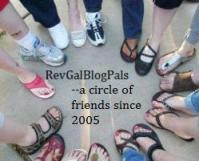My rating: 4 of 5 stars
After reading and thorough enjoying Stiff, I had to pick up Mary Roach's new book when I saw it on the "Featured" shelf at my library. I'm glad I did. Mary Roach is a science writer who makes science topics interesting because she's not afraid to ask the questions we wonder about but don't ask. How exactly do astronauts go to the bathroom in space? How do they bathe? What does it feel like to hurtle through the atmosphere? As someone who grew up during the 1960's I was glued to the TV during the space flights, and I was actually visiting Cape Kennedy in 1969 when the first men on the moon splash landed. I found this book fascinating. Roach experienced astronaut training first-hand - from vomiting in the zero-gravity chamber, drinking recycled urine, and to using the space toilet on camera. While on some level I understood that in zero-gravity everything "floats" I didn't really understand how that impacted bodily excretions until Roach's detailed descriptions. "Fecal popcorning" is not one of the terms NASA shared on TV when kids asked how astronauts went to the bathroom. I also had no inkling of just how prevalent motion sickness in astronauts is. Her chapter entitled "Throwing Up and Down" details the great lengths NASA has gone to in order to minimize the nausea and to deal with the vomit that results. Other chapters describe some of the early space flight experiments involving animals, the psychological problems of being in space, and the physical effects of zero-gravity on the human body. Her chapter titles are witty: "Separation Anxiety - The Continuing Saga of Zero-Gravity Elimination" deals with toileting issues, while "Houston, We Have a Fungus" discusses how astronauts attempt to stay clean (or not!).
I love her description of gravity. It starts with a basic science definition "Gravity is the pull, measurable and predicable, that one mass exerts on another."(p.85) and goes on to explain
"Gravity is why there are suns and planets in the first place. It is practically God. In the beginning, the cosmos was nothing but empty space and vast clouds of gases. Eventually the gases cooled to the point where tiny grains coalesced. These grains would have spent eternity moving through space, ignoring each other, had gravitational attraction not brought them together. Gravitation is the lust of the cosmos. As more particles joined the orgy, these celestial blobs grew in size. The bigger they became, the bigger the pull they exerted. Soon (in a thousands-of-centuries sort of way) they could lure larger and more distant particles into the tar pit of their gravitational influence. Eventually stars were born, objects big enough to pull passing planets and asteroids into orbit. Hello, solar system.
Gravity is the prime reason there's life on Earth. Yes, you need water for life, but without gravity, water wouldn't hang around. Nor would air. It is Earth's gravity that holds the gas molecules of our atmosphere -which we need not only to breathe but to be protected from solar radiation - in placer around the planet. Without gravity, the molecules would fly off in to space along with the water in the oceans and the cars on the roads and you and me and Larry King and the dumpster in the In-N-Out Burger parking lot." (pp. 85-86)
This book introduced new information to me, clarified some ideas, put old ideas into a new light, and made me laugh. I call that a pretty great book!
View all my reviews








No comments:
Post a Comment